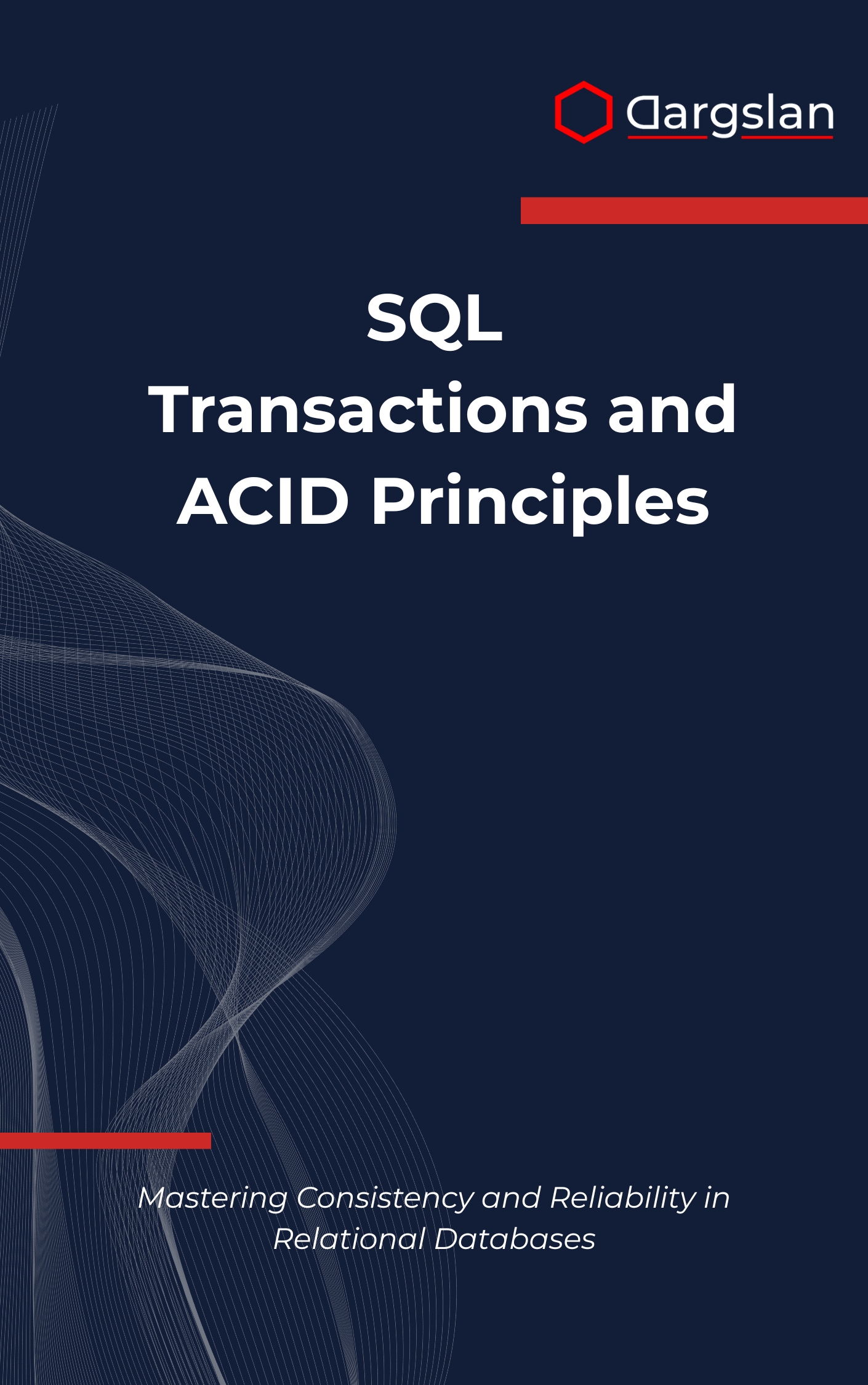SQL Transactions and ACID Principles
SQL Transactions and ACID Principles,Ensure reliable database operations by mastering SQL transactions and ACID properties.

In high-stakes, data-driven systems, a single flawed write can ripple into outages, lost revenue, and broken trust. If you build or operate relational databases, mastering transactions is the difference between fragile workflows and resilient, predictable applications. This expert-crafted guide shows you how to design for correctness first—without sacrificing performance.
Mastering Consistency and Reliability in Relational Databases
Overview
SQL Transactions and ACID Principles is a practical, platform-conscious resource for developers, DBAs, and architects who need to elevate data integrity and fault tolerance. Anchored by the core theme of Mastering Consistency and Reliability in Relational Databases, this IT book and programming guide demystifies SQL transaction control, isolation, locking, and recovery while remaining accessible as a hands-on technical book. It thoroughly covers SQL, and topics including ["SQL transactions","ACID properties","Transaction isolation levels","Database locking mechanisms","Concurrent access control","Error handling in transactions","Transaction performance optimization","Multi-platform SQL implementations","Database consistency models","Transaction monitoring and troubleshooting"], giving you the conceptual depth and executable patterns to keep systems consistent under concurrency and failure.
Who This Book Is For
- Database administrators who safeguard critical workloads and need actionable patterns for isolation tuning, locking analysis, and recovery planning that minimize contention and downtime.
- Application developers aiming to ship reliable features faster by learning how to scope transactions, handle errors idempotently, and design for correctness across multiple SQL engines.
- Data architects and engineering leaders ready to standardize consistency practices across teams and environments—build confidence, reduce incidents, and scale predictably.
Key Lessons and Takeaways
- Master ACID in practice: translate Atomicity, Consistency, Isolation, and Durability into concrete SQL patterns with BEGIN/COMMIT/ROLLBACK, savepoints, and robust retry logic.
- Tune isolation levels with intent: choose between READ COMMITTED, REPEATABLE READ, and SERIALIZABLE based on workload, and learn to diagnose anomalies like dirty reads, non-repeatable reads, and phantom reads.
- Navigate locks and concurrency: understand row- vs. page-level locking, deadlock detection, and access patterns that reduce blocking while preserving correctness under concurrent access control.
Why You’ll Love This Book
Clarity meets depth: each concept is explained from first principles, then reinforced with portable SQL examples and platform-specific notes for major database engines. You’ll see how theory maps to real incidents—and how small design choices prevent cascading failures.
The guidance is step-by-step, opinionated, and pragmatic. From error handling in transactions to transaction performance optimization, you’ll get concrete recipes, anti-pattern alerts, and trade-off discussions that apply equally well in greenfield builds and legacy refactors.
How to Get the Most Out of It
- Start with the fundamentals chapter, then progress through ACID, isolation, and locking before diving into platform-specific nuances; this scaffolding ensures every advanced topic sits on a solid conceptual base.
- Apply concepts in your own code: add explicit transactions to critical pathways, capture retryable error codes, and benchmark different isolation levels against realistic concurrency loads.
- Build mini-projects: implement an order-processing workflow with idempotent operations, add a saga-style compensation routine, and run failure drills that test crash recovery and monitoring alerts.
Deeper Coverage You Can Use Tomorrow
Beyond the basics, this guide compares ACID and BASE models so you can reason about consistency boundaries across microservices and event-driven systems. It shows how to combine optimistic and pessimistic patterns, when to rely on unique constraints vs. explicit locks, and how to prevent “lost update” bugs without over-serializing your workload.
You’ll also learn multi-platform SQL implementations: nuanced differences in syntax, locking semantics, and default isolation across popular engines. The book’s side-by-side examples make it easy to port patterns and avoid vendor-specific pitfalls.
Real-World Problem Solving
Discover battle-tested strategies for transaction monitoring and troubleshooting with query logs, lock graphs, wait events, and deadlock reports. See how to reproduce anomalies safely, add observability to catch them early, and use backpressure to protect upstream systems during spikes.
Error handling in transactions is treated as a first-class skill: you’ll implement retries with jitter, detect transient vs. fatal errors, use savepoints to localize rollbacks, and write idempotent operations that survive network glitches and partial failures.
Performance Without Compromising Integrity
The book teaches how to reduce contention by shrinking transaction scope, batching writes thoughtfully, and selecting indexes that minimize hot spots. You’ll learn when to prefer optimistic concurrency with version checks, and when serialized enforcement is worth the cost.
Practical heuristics and measurable checkpoints help you ship improvements confidently: test plans, rollback strategies, and verification queries ensure that every change moves reliability forward.
Your Professional Edge
Whether you manage core banking tables, e-commerce carts, analytics pipelines, or SaaS multi-tenant workloads, these patterns will raise your team’s quality bar. You’ll leave with a shared vocabulary for code reviews, design docs, and incident retrospectives that unify engineering around data integrity.
Most importantly, you’ll cultivate a mindset: design for consistency first, measure under realistic concurrency, and automate the guardrails that keep production safe as your system evolves.
Get Your Copy
If you’re serious about building resilient, predictable systems on SQL, this guide is your blueprint. Strengthen your fundamentals, apply proven patterns, and ship with confidence.




